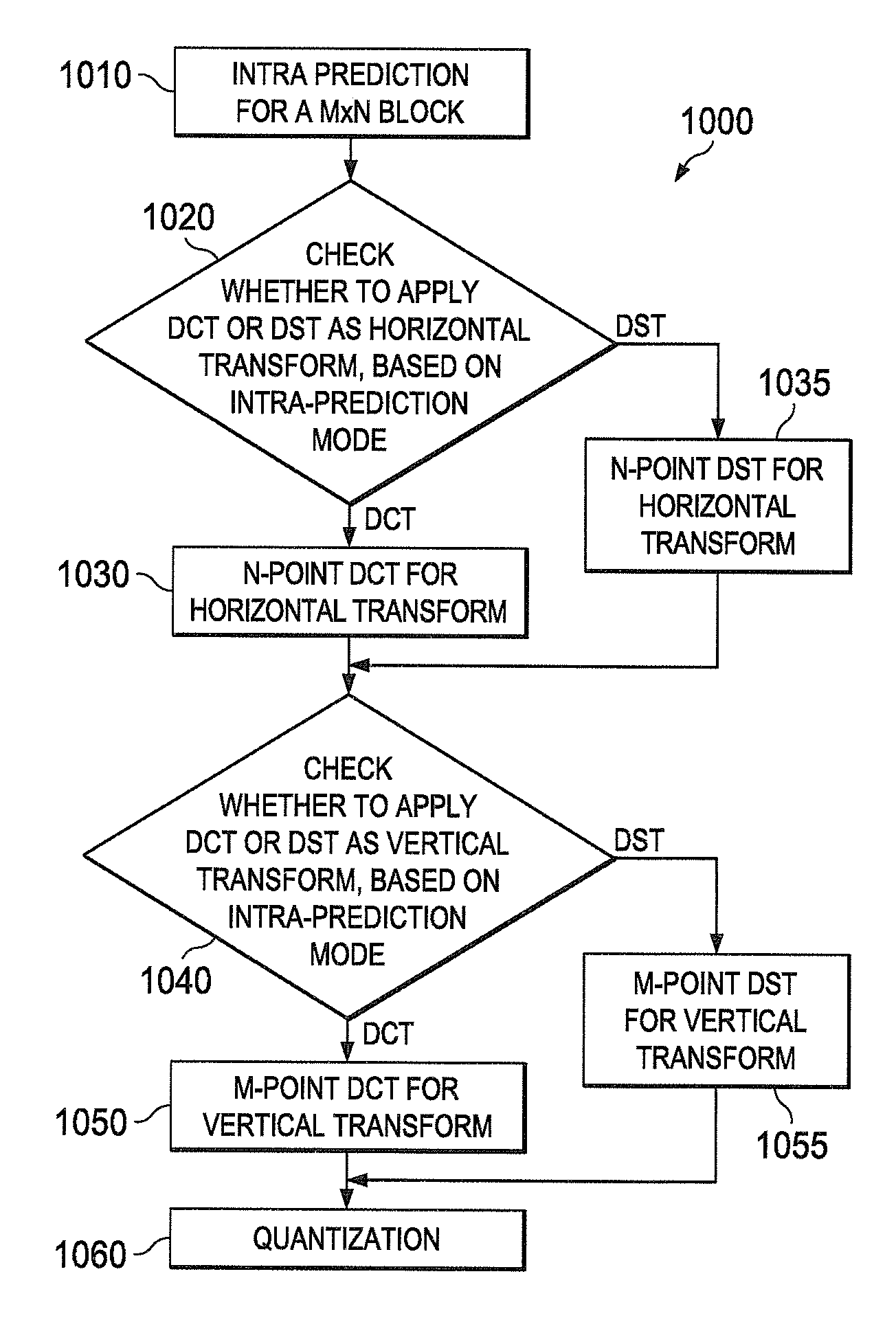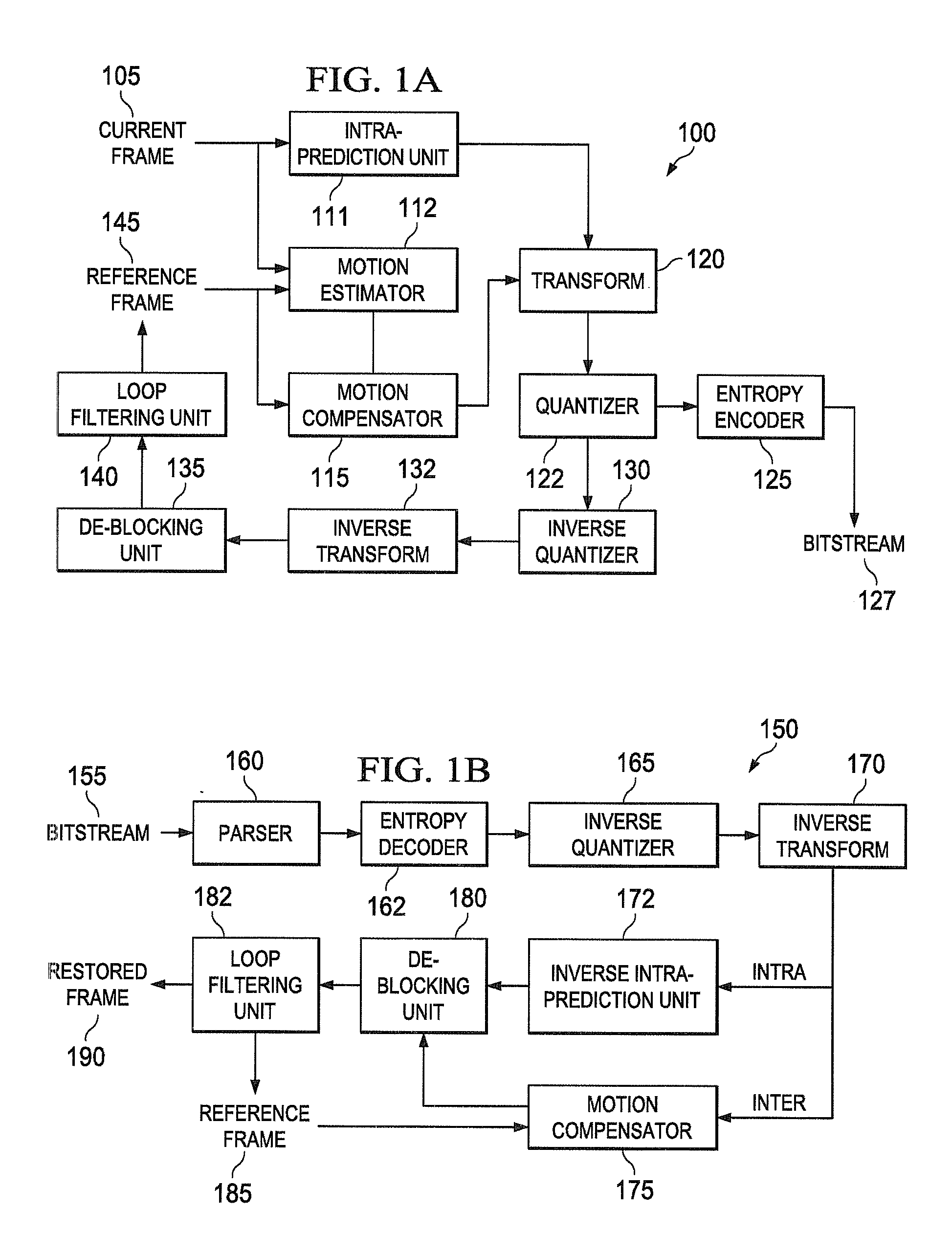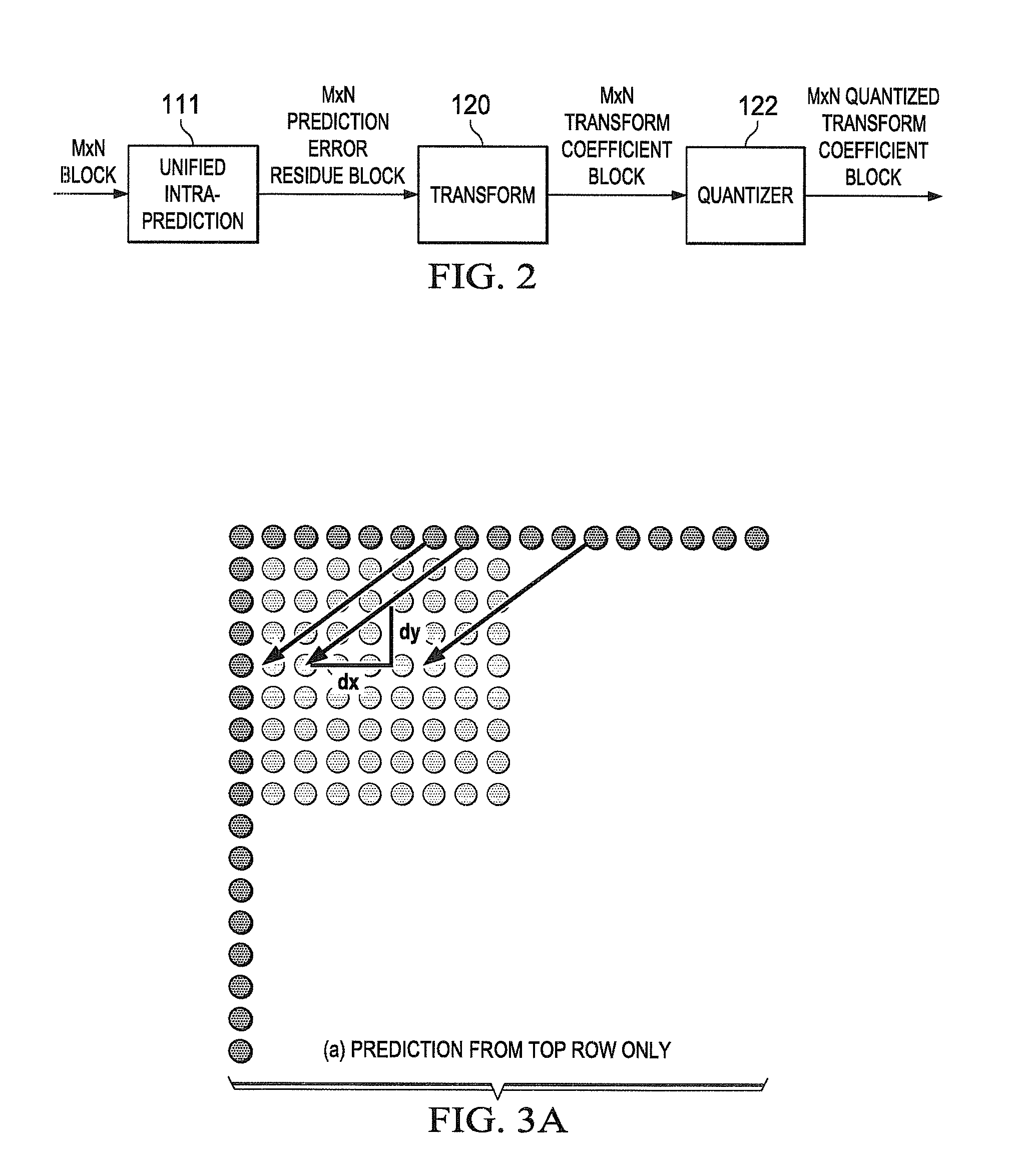Low complexity transform coding using adaptive dct/dst for intra-prediction
a transform code and low complexity technology, applied in the field of video encoder/decoder, can solve the problems of high computational complexity, limited practicability of klt, and no longer the cas
- Summary
- Abstract
- Description
- Claims
- Application Information
AI Technical Summary
Benefits of technology
Problems solved by technology
Method used
Image
Examples
Embodiment Construction
[0029]FIGS. 1A through 14, discussed below, and the various embodiments used to describe the principles of the present disclosure in this patent document are by way of illustration only and should not be construed in any way to limit the scope of the disclosure. Those skilled in the art will understand that the principles of the present disclosure may be implemented in any suitably arranged video encoder or decoder.
[0030]The present disclosure is directed to selecting between Discrete Sine Transform (DST) and Discrete Cosine Transform (DCT) for various prediction modes in intra-coding for video. Choosing between DST and conventional DCT based on intra-prediction modes optimally yields substantial compression gains. The embodiments of the present disclosure use a low complexity transform and requires only one DST transform matrix, resulting in a fast implementation of DST. Although embodiments of the present disclosure will be described with reference to the HEVC (High Efficiency Vid...
PUM
 Login to View More
Login to View More Abstract
Description
Claims
Application Information
 Login to View More
Login to View More - R&D
- Intellectual Property
- Life Sciences
- Materials
- Tech Scout
- Unparalleled Data Quality
- Higher Quality Content
- 60% Fewer Hallucinations
Browse by: Latest US Patents, China's latest patents, Technical Efficacy Thesaurus, Application Domain, Technology Topic, Popular Technical Reports.
© 2025 PatSnap. All rights reserved.Legal|Privacy policy|Modern Slavery Act Transparency Statement|Sitemap|About US| Contact US: help@patsnap.com



